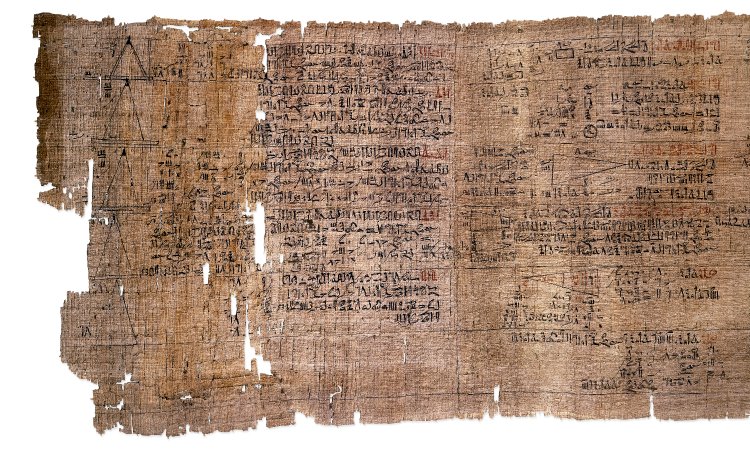What is Geometry?
Geometry definition
The word "geometry" comes from two Greek words meaning "earth measure," but the skills of geometry have some of their roots in ancient Egypt, where annual flooding by the Nile forced priests and other learned men to find ways to mark off individual plots of land when important references were washed away.
Some of the world's greatest and oldest civilizations each developed geometry independently. India, Babylon, China, and other societies each contributed their own ways of looking at shapes, spatial relationships, and numerical relationships (such as a circle's diameter to its circumference). Today we will look at the contributions of ancient Egypt, ancient Greece, and France.
Ancient Egypt
Starting sometime around 3,000 BCE, ancient Egyptians used an early form of geometry to survey their riverbank lands along the flooding Nile. They also measured and charted the stars, and then, around 2,900 BCE, they used their knowledge of flat and solid shapes to construct square pyramids of massive size. Square pyramids have with four sloping, triangular faces and square bases.
The Rhind Papyrus, from approximately 1650 BCE, shows an approximation of the irrational number pi, , indicating a very sophisticated understanding of number relationships still used today in calculating circles.

Ancient Greece
Our society looks back at ancient Greek society as the real birthplace of the "traditional" geometry, with contributions by Thales of Miletus, Pythagoras, and Euclid.
Pythagoras
We still honor Pythagoras with the "Pythagorean Theorem" even if other countries, such as India and China, developed the same triangle relationships on their own. Pythagoras in the seventh century BCE showed that the squares of two legs of a right triangle were equal to the square of the hypotenuse.

Euclid
Euclid, working around 300 BCE (the third century BCE), wrote and assembled 13 books of geometry, separating ideas into basic truths (axioms), postulates, and theorems. To this day, we use Euclid's work in logic and geometry to prove theorems with mathematical definitions over 2,000 years old.

17th Century France
René Descartes
René Descartes carried geometry forward by leaps and bounds -- or by tiny squares -- when he developed a coordinate system to place geometry on a systematic plane. The Cartesian coordinate system (x and y axis) is named in his honor and forms a foundation for the calculus independently discovered by Sir Isaac Newton and Gottfried Leibniz.

With coordinate graphing you can calculate slopes, notate formulas, and make visual representations of algebraic equations like .
Modern applications
All the geometries -- Egyptian, Greek, and Cartesian coordinate geometry -- have many everyday uses. We still measure out land today to declare ownership (like ancient Egyptians did), we still study flat shapes and their relationship to three-dimensional shapes (as ancient Greeks did), and we constantly graph information on coordinate planes (like stock charts or map applications on smartphones do).
More important for anyone from Kindergarten through grade 12, the study of Euclidean geometry helps shape and order your mind, so you have a clear way of thinking about more complicated mathematics. High school students who are strong in geometry will rapidly make connections between geometry and trigonometry, and between geometry and algebra.
New branches of geometry are constantly evolving, too, with fractal geometry and differential geometry helping to shape modern architecture and engineering.
Non-Euclidean geometries
Going beyond the founders of geometry, modern mathematicians questioned some of Euclid's basic assumptions to see where such rethought worlds might lead.
Mathematics without parallel lines; geometries in higher dimensions; twisted geometries; these all exist almost as thought experiments and exercises for mathematicians. Applications of these geometries have been found in modern theories of space-time and cosmology.
It all goes back
At its core, geometry will always be about fundamental properties of measurement and shapes. A thorough knowledge of spatial relationships will help any mathematics student to make clearer sense of other mathematics. With a foundation in geometry, and an appreciation of 3,000 years of study, we can help build our present and future worlds.
Lesson summary
Now that you have worked through this lesson, you are able to recall and explain the contributions of various civilizations and mathematicians to the development of geometry. You should also be able to compare and contrast Egyptian, Greek and French developments in geometry.